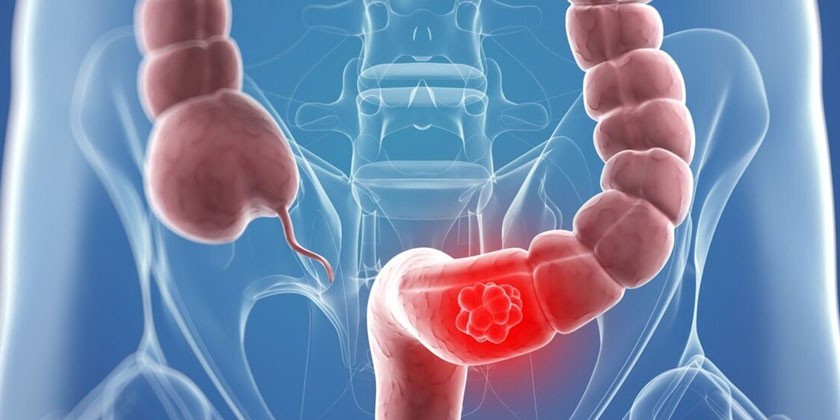What other names does it have?
Gastrointestinal obstruction
Intestinal volvulus
Intestinal intussusception
ICD-9: 560
ICD-10: K56
What is intestinal obstruction?
Intestinal obstruction is the partial or total blockage of the intestine that prevents the normal transit of digestion.
Obstruction can occur in both the small and large intestines and can cause a build-up of matter, altering the frequency of stools.
What types are there?
There are two types of intestinal obstructions:
Mechanical: Mechanical obstructions occur because the intestine is physically blocked and the contents within it cannot overcome the obstruction.
There are certain very characteristic mechanical obstructions:
Intestinal volvulus: The intestine twists on itself and can cause the interruption of blood flow to the intestine and the possible death of tissue.
Intussusception or invagination: A part of the intestine enters another section of the intestine. It is most common in children 3 to 9 months, although it can also appear in older children. In adults, it is usually caused by intestinal tumors.
Meconium ileus: Blockage of the small intestine in newborns caused by excessively thick meconium (a baby’s first bowel movement). It is usually a sign of cystic fibrosis.
Mechanical obstructions can be caused by:
Adhesions or abnormal growth of tissue due to previous abdominal or pelvic surgeries in the area. It is the most common cause (60% -70% of cases)
Hernias
Gallstones (rare)
Fecal retention
Colorectal cancer
Presence of foreign bodies in the intestine
Inflammatory bowel disease (Crohn’s disease)
Diverticula
Non-mechanical: Non-mechanical obstruction occurs because peristalsis (the wave-shaped muscle contractions of the intestine that normally move food through the digestive tract) stops. It may be due to paralytic ileus.
What symptoms does it present?
One of the first symptoms of mechanical bowel obstruction is abdominal pain or cramping.
Babies usually lift their legs, cry in pain, and suddenly stop crying. They then behave normally for 15 to 30 minutes until the next cramp appears.
Vomiting is another typical symptom of bowel obstruction and allows you to locate the location of the obstruction. If vomiting occurs shortly after the cramp the obstruction is in the small intestine, but if it is delayed the obstruction is in the large intestine.
If the blockage is complete, the patient will not pass gas or stool. However, if the blockage is only partial, the patient may have diarrhea.
Initially, there is little or no fever.
When material in the intestine cannot pass past the obstruction, the body reabsorbs large amounts of fluid and the abdomen becomes inflamed.
Intestinal strangulation (interruption of blood flow to the intestine), occurs in approximately 25% of cases and is a serious condition that can progress to gangrene in about six hours.
How is it diagnosed?
The doctor can auscultate with the stethoscope and will hear gurgling noises in the intestine that later diminish and stop to reappear after a certain time.
Additionally, imaging techniques can be used to confirm the diagnosis. X-rays, CT scans, or ultrasounds of the abdomen may be done. A barium enema or barium enema (an X-ray of the colon and rectum after administration of a barium compound) can locate the location of the blockage.
There is no way to determine if an obstruction is simple or strangulated, except by surgery.
What is the recommended treatment?
All patients suspected of having intestinal obstruction are hospitalized. Treatment must be prompt because strangulated obstructions can be fatal. The first step is to insert a nasogastric tube to suction the contents of the stomach and intestines.
Later it can be treated, depending on the case, in a surgical or non-surgical way:
Non-surgical treatment: In some cases of volvulus, a rectal tube can be guided into the intestines that will fix the twisted intestines. In babies, a barium enema can reverse intussusception in 50-90% of cases. Sometimes an air enema is used instead of a barium enema. In patients with only partial obstruction, a barium enema can also resolve the blockage.
Surgical treatment: If previous efforts fail, surgery is imperative. Strangulated obstructions require emergency surgery. The blocked area is removed and that part of the intestine is cut out. If the obstruction is caused by tumors, polyps, or scar tissue, they are also removed. Hernias, if they exist, are repaired. Antibiotics are given to reduce the chance of infection.
What is the diagnosis of the illness?
Untreated bowel obstructions can be fatal. The intestine becomes strangled or perforated, causing a massive infection. However, with prompt treatment, most patients recover without complications.
Up to 80% of patients with volvulus obstruction treated without surgery have recurrences. Recurrences in infants with intussusception are most likely to occur during the first 36 hours after the blockage is removed.
The mortality rate for treated babies is 1 to 2%.
